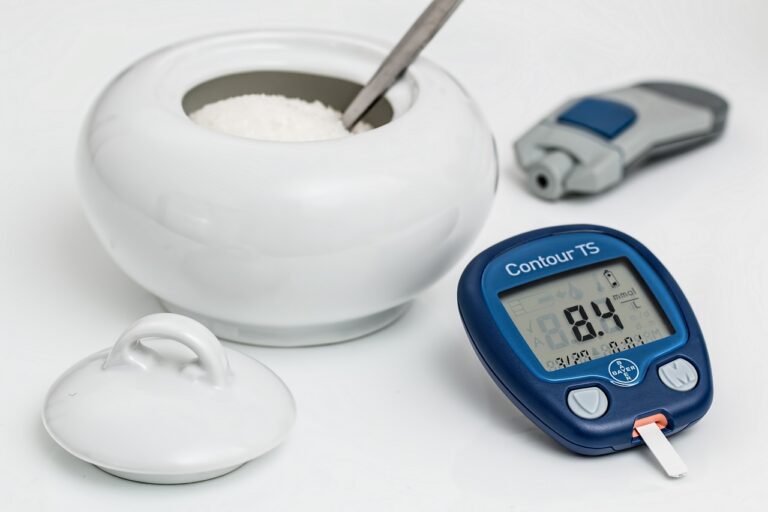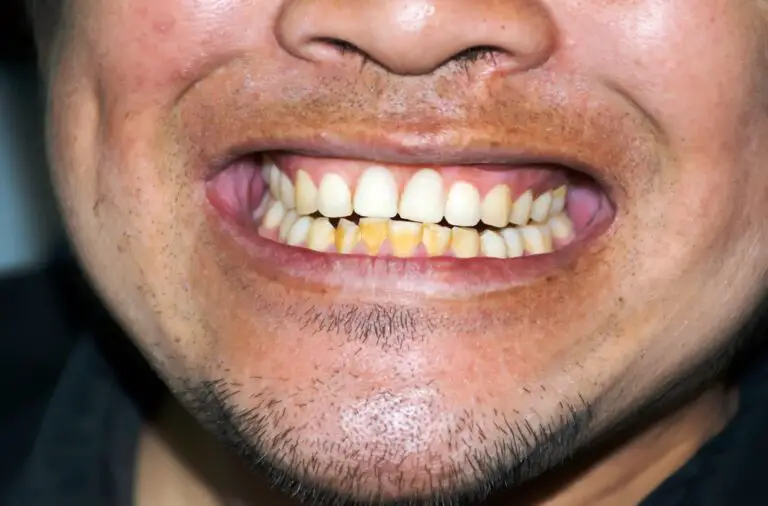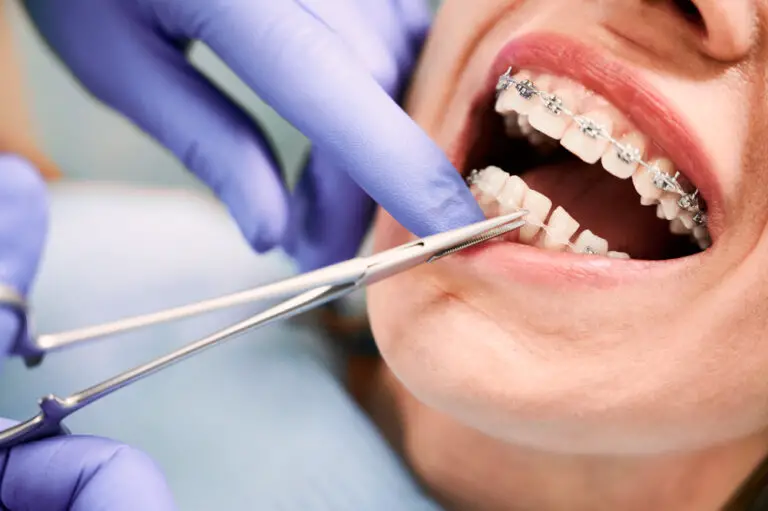Tooth decay, also known as dental caries or cavities, is one of the most prevalent chronic diseases worldwide, affecting an estimated 2.4 billion people. It occurs when acids produced by bacteria in dental plaque erode and dissolve the mineral content of teeth, leading to holes or cavities forming. This extensive tooth decay can become severely painful, cause tooth loss, and require extensive dental work to treat.
Sugars are undoubtedly a major contributing factor to the development of tooth decay. When you consume sugary foods and beverages, the sugar interacts with bacteria in your mouth and causes acidic byproducts as it is broken down. Frequent sugar intake allows acids to attack your tooth enamel often, tipping the balance towards mineral loss and eventual cavities. This has raised an important question amongst dental health experts and patients alike – can reducing or even eliminating sugar intake stop or reverse the tooth decay process?
A Closer Look at How Sugar Causes Tooth Decay
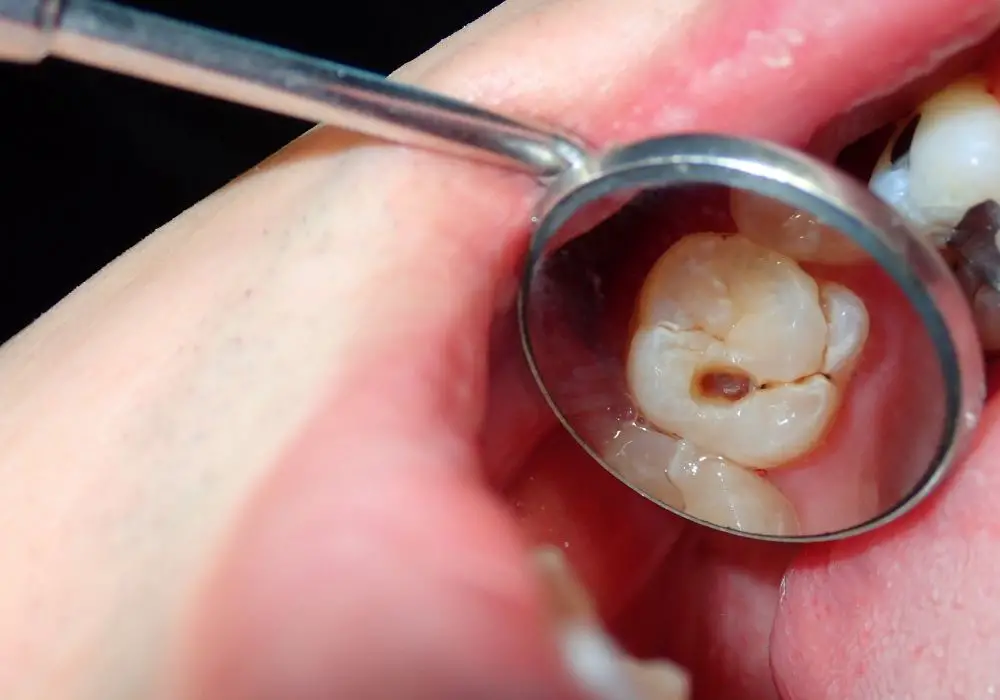
To understand if quitting sugar could potentially reverse tooth decay, it’s important to first take a more in-depth look at how sugar initiates the decay process:
- Cariogenic Bacteria Metabolize Sugar – The oral bacteria most responsible for initiating tooth decay are known as cariogenic bacteria, with Streptococcus mutans being the primary culprit. When you consume foods or drinks containing sugar, these bacteria interact with the sugars and metabolize them into acid as a byproduct via a process called glycolysis. Lactic acid is one of the main acids produced.
- Acid Diffuses Into Tooth Enamel – The lactic acid and other acids released dissolve into the fluid of your dental plaque and saliva, lowering the pH of your mouth. These increased concentrations of acids are then able to more readily diffuse into the microscopic pores and channels within your tooth enamel.
- Demineralization Weakens Enamel – Once inside the enamel, the acids break down and dissolve the hydroxyapatite mineral crystals that give teeth their hardness and strength. This process is known as demineralization and causes microscopic pits, lesions, and eventually cavities to form.
- Frequent Sugar Means More Acid Attack Cycles – Each time you eat or drink sugar and allow acids to demineralize enamel, the process repeats itself. When sugars are consumed frequently throughout the day, the acid attacks are nearly constant, preventing the enamel from ever fully rehardening.
- Progression of Enamel Erosion to Cavitation – Over weeks to months to years of frequent acid onslaught, erosion of the enamel progresses through increasing stages – from translucent surface demineralization to opaque white spot lesions and eventually to full cavitation and hole formation. This is how untreated decay advances to form dental cavities in need of restoration.
The Potential for Sugar Reduction to Reverse Early Decay
Given how definitively sugar drives the tooth decay process via acid production, it stands to reason that reducing its consumption could potentially help halt or even reverse the damage in its early stages. While more extensive clinical studies in humans are still needed, some promising research along with anecdotal evidence suggests that quitting or dramatically limiting dietary sugars can promote “remineralization” of initially demineralized enamel and stop early cavity formation:
- Enamel Retains Ability for Self-Repair – Tooth enamel is composed of a robust matrix of hydroxyapatite crystals fortified with various minerals like calcium, phosphate, and fluoride. It turns out that under the right biochemical conditions, enamel has significant potential for innate self-repair through remineralization of its crystalline structures.
- Less Sugar Means Fewer Acid Attacks – When high sugar foods and beverages are no longer part of the diet, the populations of cariogenic and acid-producing bacteria decline due to lack of fuel source. This results in far fewer acidic byproducts released and substantially less demineralization of enamel.
- Remineralization Process Can Catch Up – Given extended periods without new acid attacks from sugar, saliva and its mineral content of calcium, phosphate, and fluoride are able to slowly diffuse back into the enamel’s micropores and rebuild some of those lost mineral crystals.
- Early White Spot Lesions Can Remineralize – Some studies using antimicrobial rinses or sugar-free gum to simulate reduced cariogenic bacteria showed partial rehardening of early white spot lesions indicative of natural enamel repair.
- Cavity Progression Halts at Initial Stages – Based on this evidence, quitting sugar consumption allows the cycles of demineralization and remineralization to reach a new equilibrium where the enamel erosion does not continue to advance, but rather stalls at a reversible point.
- Advanced Cavities Still Require Dental Work – However, keep in mind that while early decay may remineralize after sugar cessation, cavities that have already severely progressed in size and depth are unlikely to “heal” on their own without professional dental intervention.
Implementing a Low-Sugar Diet

To gain the potential oral and overall health benefits of sugar reduction, you will need to make some key modifications to your regular diet and habits:
- Severely Limit Sweets and Desserts – This includes obvious high sugar items like cookies, cakes, pies, ice cream, chocolate, and candy. Reserve these as occasional treats only, not daily eatables.
- Avoid Sugary Beverages – Sodas, fruit juices, sweetened coffee and tea, sports drinks, and any beverage with added sugars should be removed from your regular rotation. Drink primarily water, seltzer, or unsweetened tea and coffee instead.
- Reduce Natural Sugars in Fruit – Fruits do provide important nutrients, but their natural fructose can also harm teeth. Limit portions to 1 fruit per day and always consume whole fruits rather than juices.
- Read Labels Carefully – Scan ingredient lists closely to spot added sugars like sucrose, high fructose corn syrup, agave, honey, etc. in packaged foods. Avoid items where sugar is in the first few ingredients.
- Watch Out for Hidden Sugars – Sauces, dressings, crackers, flavored yogurts, breakfast cereals, granola bars, and many other unsuspecting foods often contain sneaky added sugars. Checknutrition facts.
- Skip Syrups and Sugary Toppings – Cut out habitually adding syrup, honey, sugar, or sweetened whipped cream to foods like pancakes, waffles, cereal, oatmeal, and coffee drinks.
Optimizing Oral Health and Hygiene
When minimizing sugar for your teeth’s sake, also be diligent about daily oral hygiene and habits that support remineralization:
- Brush Teeth Twice Daily – Properly brushing teeth morning and night removes decay-causing plaque and allows remineralization. Use a soft-bristled toothbrush and fluoride toothpaste.
- Floss Regularly – Flossing removes plaque from between teeth that brushing misses. This inhibits demineralization where cavities commonly start.
- Swish with Fluoride Rinse – An ADA-approved fluoride mouthwash used alongside brushing with fluoride toothpaste provides further sources of remineralizing fluoride to enamel.
- Chew Sugar-Free Gum – Chewing gum increases saliva flow to wash away acids and provide minerals. Opt for gum with xylitol which helps reduce cavity-causing bacteria.
- Eat Remineralizing Foods – Dairy, nuts, leafy greens, and other calcium-rich whole foods help provide minerals for enamel repair and growth.
- Drink Mineral Water – Sipping on mineral water between meals can support remineralization without sugar or acidity. Varieties with added calcium and phosphate are ideal.
- Get Regular Dental Cleanings – Professional teeth cleanings every 6 months remove hardened plaque allowing remineralization and help spot early demineralization you can’t see at home.
The Wider Health Benefits of Cutting Sugar

Along with possible oral and dental perks, dramatically decreasing sugar intake offers numerous other benefits for overall health and disease risk reduction:
- Weight Loss and Waistline Reduction – The excess calories from added sugar are directly linked to obesity and fat gain, particularly dangerous visceral fat around organs. Kicking sugar helps get to a healthy weight.
- Lower Risk of Heart Disease – Frequently eating sugar has been tied to dangerous increases in LDL cholesterol, triglycerides, blood pressure, and inflammation that damage arteries and raise heart disease risk.
- Decreased Risk of Type 2 Diabetes – Regularly consuming sugary foods and drinks is known to drive insulin resistance, the hallmark of type 2 diabetes. Quitting sugar improves insulin sensitivity and glycemic control.
- Potentially Lower Cancer Risk – Some research has associated high added sugar intake with increased risk for certain cancers. More study is needed, but the cancer-feeding potential of high blood sugars applies.
- Healthier, More Youthful Skin – Diets high in sugar can accelerate skin aging by glycating collagen and elastin, damaging proteins that keep skin firm. Your complexion may improve sans sugar.
- Better Sleep – Blood sugar spikes and crashes from sugar disrupt normal sleep-wake cycles. Stable blood sugar and insulin without sugar boosts quality sleep.
- Balanced Energy Levels – The quick highs and sluggish lows in energy from sugar can leave you tired and moody. Steady energy throughout the day is more likely without the sugar rollercoaster.
- Improved Immunity – Excess sugar intake is linked to impaired immune function and inflammation. Quitting sugar bolsters the immune response to pathogens.
Challenges to Anticipate When Quitting Sugar
Making a drastic reduction in sugar intake may be difficult at first, especially if coming from a standard high-sugar diet. Be prepared for these hurdles:
- Intense Sugar Cravings – Sugar addiction and withdrawal is real. Be ready for frequent cravings, desires to binge, and feeling deprived without favorite sweets and treats. Stock up on healthy snacks to get through the early weeks.
- Possible Withdrawal Symptoms – It’s not uncommon to experience headaches, low energy, irritability, and brain fog when first cutting sugar as your body adjusts hormonally. Symptoms typically resolve within 4-6 weeks.
- Periodic Slip-Ups – An occasional slip up and indulgence in a sugary food doesn’t mean failure. Get right back on track with your low-sugar eating at the next meal without letting it derail your motivation.
- Social and Environmental Cues – Birthdays, holidays, restaurants, and celebrations where sugar is ubiquitous can be tricky situations. Have a plan for politely navigating or exempting yourself from temptations.
- Strong Habits to Break – Long-ingrained habits like adding sugar to coffee, baking with sugar, or nightly ice cream require conscious effort to replace with lower sugar alternatives until new habits form.
- Lack of Label Reading – It takes diligence to start scanning nutrition labels and ingredients lists to spot hidden sugars you’ll need to avoid. Making this a routine habit reduces slip-ups.
Can Cutting Sugar Benefit Dental Implants?
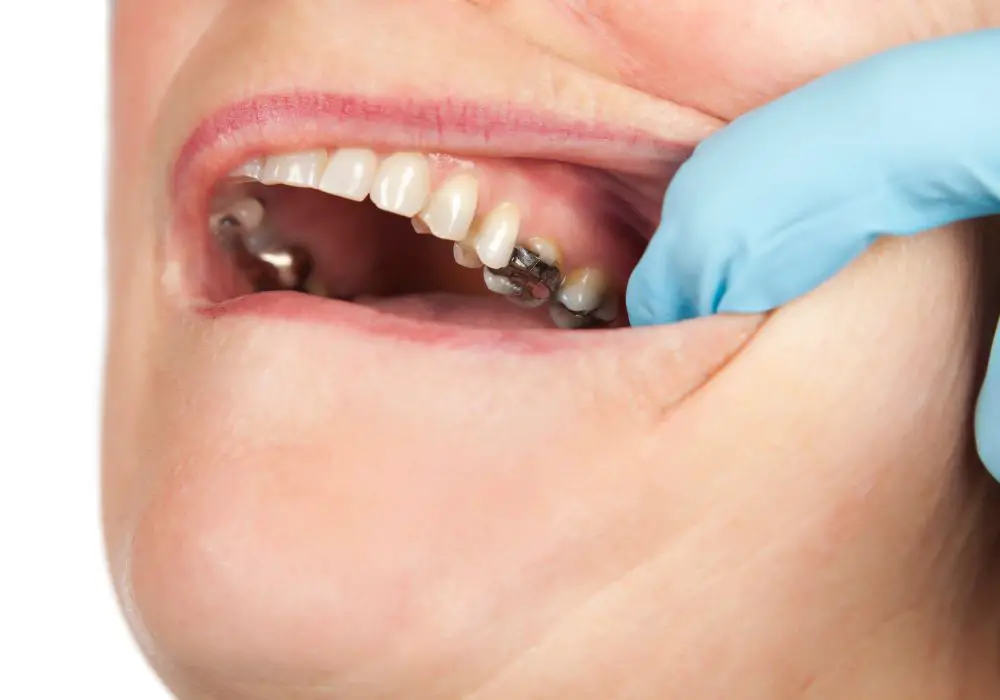
Along with potential positive impacts for natural teeth, reducing sugar consumption may also be beneficial for those with dental implants:
- May Help Prevent Peri-implantitis – This gum infection and inflammation around implants shares risk factors with gum disease that regular sugar exacerbates. Less sugar means less plaque and acid leading to healthier peri-implant tissues.
- Reduces Risk of Secondary Cavities – Dental restorations like implant crowns are still susceptible to decay around margins from sugar and acid. Limiting sugar helps minimize recurrent decay.
- Improves Implant Success Rates – Some research indicates hyperglycemia and diabetes involving frequent high sugars reduce implant integration and survival. Controlling sugar likely supports optimal implant longevity.
- Allows Better Healing After Implant Placement – High blood sugars are linked to impaired wound healing. Stable blood sugar without sugar spikes optimizes healing of implant surgical sites.
However, more studies focused specifically on sugar’s impact on dental implant outcomes are still needed to make definitive conclusions.
Takeaway Points
While quitting sugar alone cannot magically heal extensive advanced tooth decay damage, limiting your sugar consumption shows promising potential for:
- Slowing, stopping, and potentially reversing early tooth decay when caught at its initial stages
- Allowing enamel’s natural remineralization process to rebuild some of the initial mineral loss and arrest lesion progression
- Achieving a new equilibrium where demineralization from acid attacks does not outpace remineralization efforts of saliva and fluoride
- Curtailing the growth of acid-producing oral bacteria populations by removing their primary food source
- Bestowing many additional boons for systemic health beyond oral health improvements
Implementing a low-sugar dietary regimen requires commitment and perseverance through challenges like cravings and lifestyle adjustments. But for those hoping to take an active role in improving their dental health, tapping into enamel’s innate capacity for self-repair by quitting sugar may be one effective and evidenced-based approach to discuss with your dentist.
Frequently Asked Questions
How long does it take to reverse early stage tooth decay after quitting sugar?
It can take anywhere from 6-12 months up to 2 years or longer of strict sugar reduction to allow remineralization and reversal of early tooth decay. The exact timeline varies based on factors like how much demineralization has already occurred, your dental hygiene habits, saliva flow, and how completely you are able to eliminate dietary sugars. Patience and persistence are required.
Can cavities progressing into dentin be healed without traditional fillings?
Unfortunately, once decay has passed beyond the enamel layer and begun penetrating into the deeper tooth layer called dentin, quitting sugar alone is unlikely to fully heal or “cure” the cavity without professional intervention. The hole is too deep and irreversible pulp damage becomes more likely. However, cutting sugar still helps prevent new cavities from reaching this advanced stage.
What are the most effective natural agents to remineralize enamel?
Some of the most effective naturally-derived agents shown to enhance enamel remineralization include: fluoride toothpaste or rinse, xylitol gum, green tea compounds, bioavailable calcium and phosphate from foods, casein phosphopeptide, and various polyphenols. Using these alongside sugar reduction provides added remineralization benefits. But consult your dentist before attempting to treat decay.
Is fruit off-limits when trying to remineralize teeth by quitting sugar?
Fruit does not need to be completely avoided when cutting sugar for your dental health. Stick to eating whole fruits rather than drinking fruit juice, limit portions to no more than 1 per day, enjoy fruit alongside protein/fat containing meals, chew thoroughly, and swish water after. The fiber content helps mitigate the sugars, but moderation is still key.
How can you tell if remineralization is successfully occurring after quitting sugar?
Signs that reducing sugar intake may be helping promote remineralization of demineralized enamel include: arrested progression of white spot lesions, less tooth sensitivity, improved pocket depths if gingivitis was present, better plaque control upon brushing, reduced staining, stronger enamel readings on dental exam, less new cavities developing, and decreased risk factors for decay.



